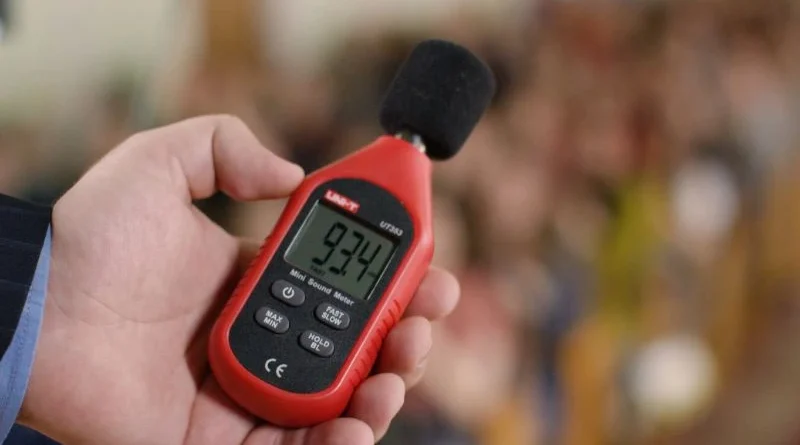
Digital frequency meters have revolutionized signal analysis, allowing us to measure and understand the frequency of electronic signals with unprecedented accuracy. These sophisticated devices have become essential tools for engineers, technicians and hobbyists, allowing them to troubleshoot and optimize electronic circuits, communications systems and even musical instruments.
In today's fast-paced world, where technology advances at an unprecedented rate, it is crucial to have reliable and accurate instruments to measure and analyze signals. The digital frequency meter has become an indispensable tool in various industries with its ability to accurately determine the frequency of a signal.
But what exactly is a digital frequency meter? Basically, it is a device that measures the frequency of an input signal and displays the result in digital format. Unlike its analog counterpart, which relies on mechanical components and is prone to inaccuracies, the digital frequency meter uses advanced digital signal processing techniques to provide highly accurate frequency measurements.
One of the main advantages of digital frequency meters is their versatility. They can measure frequencies over a wide range, from a few hertz to several gigahertz, making them suitable for a wide range of applications. Whether you work with audio systems, radio communications, or even microwave technologies, a digital frequency meter is an invaluable addition to your arsenal.
Additionally, digital frequency meters offer additional features that expand their functionality. Many models have built-in frequency counters that can provide accurate measurements even in the presence of noise or interference. Some advanced meters also offer the ability to analyze signal waveforms, measure phase differences, and even calculate harmonic distortions.
In conclusion, the digital frequency meter is a powerful tool that has revolutionized signal analysis. Its precision, versatility and advanced features make it an indispensable tool in various sectors. In the following sections, we'll delve deeper into how digital frequency meters work, explore their applications in various fields, and discuss the latest advances in this fascinating technology. So buckle up and get ready to unlock the secrets of the digital heart rate meter!
What is a digital frequency meter?
A digital frequency meter is an essential tool used in various industries to measure the frequency of an electrical signal. It provides precise and accurate measurements and is therefore a valuable tool for engineers, technicians and scientists.
One of the key features of a digital frequency meter is its ability to measure frequencies over a wide range, from a few hertz to several gigahertz. This makes it suitable for a variety of applications, including telecommunications, electronics and power systems.
Digital frequency meters are designed to display the frequency of a signal in real time. They usually have a digital display that shows the frequency in hertz (Hz), kilohertz (kHz), or megahertz (MHz), depending on the measuring range of the instrument. Some advanced models can even display frequencies in gigahertz (GHz).
These meters use several techniques to accurately measure frequency. A common method is a crystal oscillator, which provides a stable and accurate reference frequency. The input signal is compared to this reference frequency and the difference is displayed as the measured frequency.
Digital frequency meters also offer additional features to expand their functionality. Some models have integrated frequency counters that can count the number of cycles within a certain period of time and thus calculate the frequency. Others may have frequency range selection options or the ability to measure multiple frequencies simultaneously.
In summary, a digital frequency meter is a versatile instrument for measuring the frequency of electrical signals. Its wide frequency range, accuracy and additional features make it an indispensable tool in many industries. Whether you work in telecommunications, electronics, or energy, a digital frequency meter can help you accurately analyze and troubleshoot your circuits.
How does a digital frequency meter work?
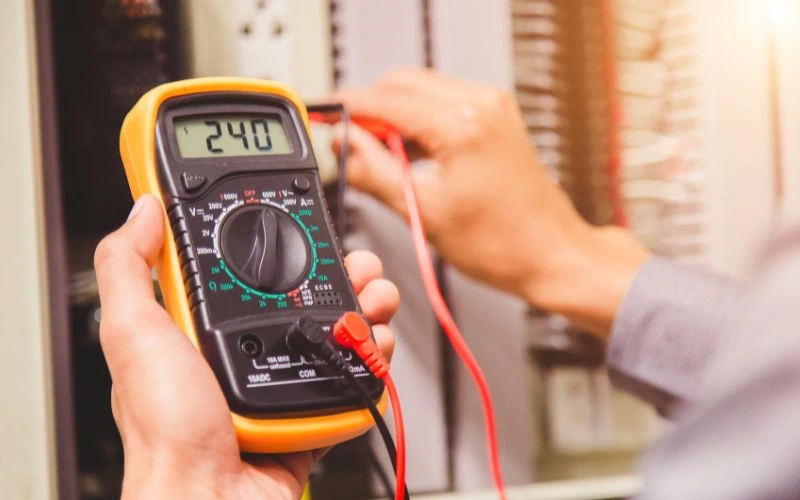
A digital frequency meter is an important tool used in various industries to measure the frequency of electrical signals. It provides accurate and reliable readings so engineers and technicians can analyze and troubleshoot electrical systems. In this article, we will look at how a digital frequency meter works and how it works.
A digital frequency meter essentially uses frequency counting to determine the frequency of an input signal. First, the analog signal is converted to digital format using an analog-to-digital converter (ADC). Once digitized, the signal can be processed and analyzed by the meter's circuitry.
The digital frequency meter uses a technique called time interval measurement to calculate frequency. It measures the interval between successive rising or falling edges of the input signal and then calculates the reciprocal of that time interval to find the frequency. This process is repeated several times to ensure accuracy and reliability.
To display the frequency, the digital frequency measuring device has a digital display such as an LCD or LED display. The measured frequency is converted to a numerical value and displayed in hertz (Hz), kilohertz (kHz), or megahertz (MHz), depending on the measuring range of the measuring device.
Some modern digital frequency meters offer features such as frequency range selection, peak and average frequency measurements, and waveform analysis. These features improve the meter's versatility and functionality and allow users to perform advanced measurements and analysis.
In summary, a digital frequency meter converts the analog input signal into digital format, measures the time interval between the edges of the signal, and calculates the frequency based on this time interval. It is an important tool for engineers and technicians in various industries as it provides accurate frequency measurements for analysis and troubleshooting purposes.
What are the applications of a digital frequency meter?
A digital frequency meter is used in many industries and applications. Its main function is to accurately measure the frequency of an electrical signal. This measurement is crucial for many different purposes, and the digital frequency meter has applications in many different areas.
One of the most common applications of a digital frequency meter is in the electronics area. Engineers and technicians use it to measure the frequency of electronic signals in circuits and devices. This information is critical for troubleshooting and diagnosing problems in electronic systems. By measuring frequency accurately, engineers can detect any anomalies and take appropriate action to correct them.
In the telecommunications industry, digital frequency meters are used to measure the frequency of signals in communication networks. This helps maintain network quality and reliability by ensuring signals are in the desired frequency range. It also helps in calibrating and testing communication devices.
Digital frequency meters are also often used in the field of sound engineering. They measure the frequency of audio signals and allow sound engineers to tune audio systems and ensure optimal sound quality. By measuring frequency accurately, you can adjust the equalization and balance of audio signals to achieve the desired effect.
Digital frequency meters play a crucial role in the area of energy generation and distribution. They measure the frequency of power systems and ensure that the frequency remains stable and within the acceptable range. This helps maintain synchronization of generators and prevent possible damage to equipment.
In summary, digital frequency meters are used in various industries. From electronics to telecommunications, from sound engineering to power generation, these measuring devices are indispensable for accurate frequency measurements. Their versatility and reliability make them indispensable in many areas and contribute to the proper functioning and maintenance of various systems and devices.
What are the benefits of using a digital frequency meter?
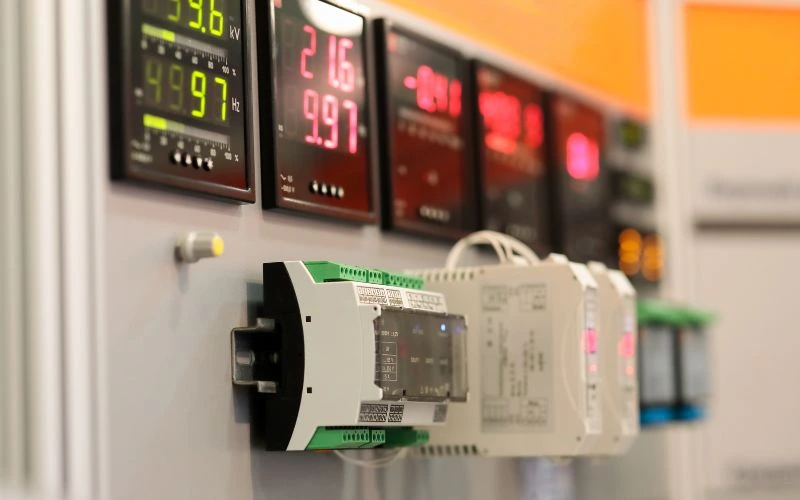
A digital frequency meter is a device for measuring the frequency of an electrical signal. It offers several advantages over its analogue counterpart, making it an indispensable tool in many sectors.
One of the main advantages of a digital frequency meter is its accuracy. Digital measuring devices provide accurate measurements and enable more reliable data analysis. This precision is particularly crucial in areas such as telecommunications, where even the smallest frequency deviation can cause significant problems.
Another advantage is the easy handling. Digital frequency meters typically have easy-to-use interfaces and clear displays, making them suitable for both professionals and beginners. Readings are often presented in numerical form, eliminating the need for manual interpretation. This simplicity saves time and minimizes the risk of errors.
Digital frequency meters also offer a wide frequency range. They can measure frequencies from a few hertz to several gigahertz, thus covering a wide range of applications. This versatility makes them suitable for various sectors, including electronics, telecommunications and aerospace.
Additionally, digital frequency meters often have additional features that expand their functionality. This may include data logging capabilities, waveform analysis, and the ability to measure multiple parameters simultaneously. Such features provide users with a comprehensive analysis of the signal under study.
In summary, the benefits of a digital frequency meter are clear. Its accuracy, ease of use, wide frequency range and additional functions make it an indispensable tool in many industries. Whether in research laboratories, production facilities or telecommunications companies – a digital frequency meter is indispensable for accurate frequency measurements.
What are the disadvantages of using a digital frequency meter?
Digital frequency meters are widely used in many industries to measure the frequency of electrical signals. Although they offer several advantages over their analog counterparts, they also have some disadvantages that the user should be aware of.
One of the main disadvantages of a digital frequency meter is its limited frequency range. Unlike analogue frequency meters, which can measure a wide range of frequencies, digital frequency meters have a specific range within which they work accurately. This means that if you need to measure frequencies outside this range, you must use a different type of meter.
Another disadvantage of digital frequency meters is their sensitivity to noise. Electrical noise can affect the accuracy of measurements made by these meters and can produce inaccurate results. To resolve this issue, users often need to employ additional filtering techniques or shielded cables, which can increase the overall cost and complexity of the measurement setup.
Digital frequency meters also require a stable power supply to function properly. Fluctuations in the power supply can affect measurement accuracy and produce unreliable results. This means users must ensure they have a stable power source or use power conditioning devices to minimize the impact of power fluctuations.
Additionally, digital frequency meters can be more expensive than analog meters. The advanced technology and additional features of digital meters often come at a higher price. This may be disadvantageous for users on a tight budget or who only need basic frequency measurement capabilities.
In summary, although digital frequency meters offer many advantages, such as: B. greater accuracy and better resolution, they also have disadvantages. These include limited frequency range, noise sensitivity, dependence on a stable power supply, and higher cost. Despite these drawbacks, digital frequency meters remain a popular choice for many applications due to their advanced features and capabilities.
How do you calibrate a digital frequency meter?
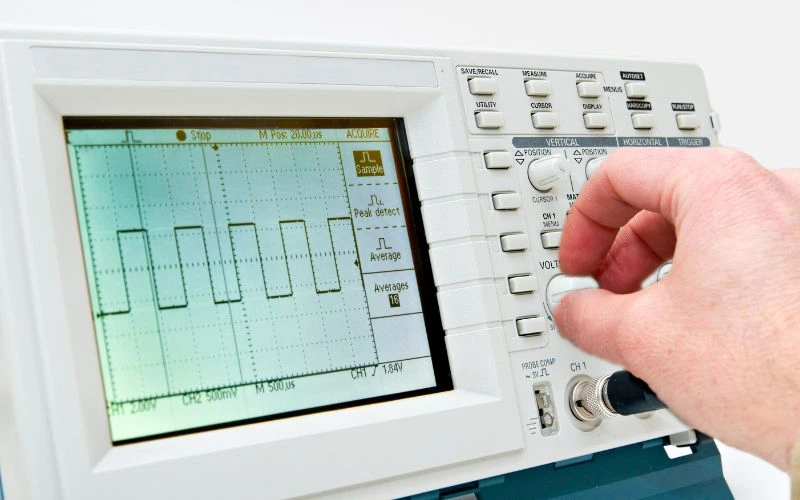
Calibrating a digital frequency meter is an essential step to ensuring accurate measurements and reliable performance. Whether you are a professional technician or a hobbyist, understanding the calibration process is crucial to obtaining accurate frequency readings. In this article, we will walk you through the steps to effectively calibrate your digital frequency meter.
Firstly, it is important to gather the necessary equipment for calibration. You need a stable and accurate frequency source, such as a function or signal generator. Additionally, a multimeter with frequency measurement function can help check the accuracy of your frequency meter.
Once you have the necessary equipment, start by connecting the frequency source to the input of your digital frequency meter. Set the frequency source to a known value within your meter's measurement range. For better accuracy, it is recommended to choose a frequency close to the middle of the range.
Then compare your digital frequency meter reading to the known frequency value of the frequency source. If there is a significant difference, you will need to adjust your meter's calibration. Most digital frequency meters have a calibration feature that allows you to make adjustments.
To calibrate your meter, consult your user manual for specific instructions. Typically you will need to enter calibration mode and adjust the calibration settings using the controls provided. Follow the steps carefully to ensure accurate calibration.
After making the necessary adjustments, recheck the frequency readings on your digital frequency meter. Repeat the process as necessary until the readings exactly match the known frequency value.
Calibrating your digital frequency meter is a crucial step in ensuring accurate frequency measurements. By following these steps and consulting your user manual, you can calibrate your meter effectively and maintain its accuracy over time. Remember to check and recalibrate your meter regularly to account for any changes or deviations in its performance.
What different types of digital frequency meters are there?
Digital frequency meters are essential tools used in various industries to accurately measure the frequency of electrical signals. These devices play a crucial role in ensuring the stability and efficiency of electronic systems. With the advancement of technology, different types of digital frequency meters have been developed to meet specific needs and applications. In this article we will look at some of the most common types of digital frequency meters in use today.
One of the most popular types is the portable digital frequency meter. These compact, portable devices are often used for field work and on-the-go measurements. They are lightweight, easy to use and provide accurate frequency readings. Portable frequency meters are ideal for technicians and engineers who need to make quick measurements in different locations.
Another type is the digital desktop frequency meter. These larger meters are designed for more accurate and advanced frequency measurements. Benchtop frequency meters often have features such as waveform analysis, harmonic analysis, and frequency synthesis. They are commonly used in research laboratories, manufacturing facilities, and educational institutions.
In addition to portable and benchtop frequency meters, there are also rack-mounted frequency meters. These meters are designed to be mounted in racks or cabinets and are often used in industrial applications. Rack-mount frequency meters are known for their durability and reliability, making them suitable for continuous monitoring and control systems.
Additionally, there are special frequency meters designed for specific applications. For example, there are frequency meters designed specifically for radio frequency (RF) measurements, audio frequency measurements, and power frequency measurements. These special meters provide precise measurements adapted to the respective frequency range.
In summary, digital frequency meters come in different designs to suit different needs and applications. Whether you need a portable meter for field work or a benchtop meter for advanced measurements, there is a digital frequency meter to meet your needs. Knowing the different types of heart rate meters will help you make an informed decision when selecting the right device for your specific needs.
What key features should I look for when purchasing a digital frequency meter?
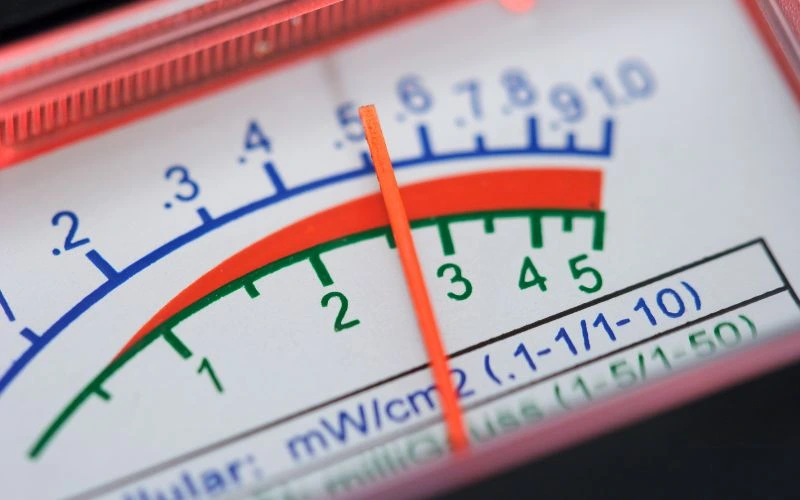
When purchasing a digital frequency meter, you should pay attention to several important features. These features ensure you get the most accurate and reliable measurements for your needs. In this article, we'll explore these important features to help you make an informed decision.
One of the first characteristics to consider is the frequency range of the meter. Different frequency meters have different ranges, so it's important to choose a meter that meets your needs. Whether you need to measure low or high frequencies, it's crucial to choose a meter with the appropriate range.
Accuracy is another important factor to consider. The accuracy of a digital frequency meter is usually measured by its resolution and accuracy. Greater resolution and accuracy lead to more accurate measurements. Therefore, it is important to choose a measuring device that offers the necessary accuracy.
Ease of use is also an important aspect. Look for a digital frequency meter with a user-friendly interface and intuitive controls. This means you can easily navigate through the settings and take the desired measurements without any problems.
Durability and build quality should not be overlooked. A durable digital frequency meter will provide years of reliable service. Look for gauges made from high-quality materials and robust construction.
Additional features such as data logging, connectivity options, and power options can also improve the meter's functionality. Consider your specific needs and look for a meter that offers the features that will be most useful to you.
In summary, when purchasing a digital frequency meter, it is important to consider frequency range, accuracy, ease of use, durability, and additional features. By carefully evaluating these key features, you can ensure you select a meter that meets your needs and provides accurate and reliable frequency measurements.
In summary, this article has covered many topics related to the keyword “digital frequency meter”. We look at what a digital frequency meter is and how it works, as well as its various applications in different industries.
One of the main advantages of a digital frequency meter is its accuracy and precision in measuring frequency, making it an essential tool for engineers and technicians. However, it is important to highlight that there are also disadvantages, such as: B. the potential for interference and the need for calibration.
Speaking of calibration, we provide a step-by-step guide on how to calibrate a digital frequency meter to ensure accurate readings. Furthermore, we explain the different types of digital frequency meters available on the market so that the reader can choose the one best suited to their needs.
When purchasing a digital frequency meter, it is important to consider key features such as frequency range, accuracy, and display options. These factors determine the effectiveness and ease of use of the meter.
The term “digital frequency meter” cannot be underestimated as it plays a crucial role in several sectors including telecommunications, electronics and manufacturing. As technology advances, we expect more developments and improvements in digital frequency meters, making them even more reliable and efficient.
We would like to thank all of our readers for taking the time to read this post. We encourage you to leave comments or feedback as your opinion is valuable to us. If you have any questions or require further information on this subject, please do not hesitate to contact us.
In summary, a digital frequency meter is an essential tool for anyone working with frequency measurements. Understanding their characteristics, advantages and disadvantages and considering key features at the time of purchase can help ensure accurate and reliable frequency measurements. Keep an eye on future developments in this area as the technology evolves. Thanks for reading and we look forward to your thoughts and comments.

